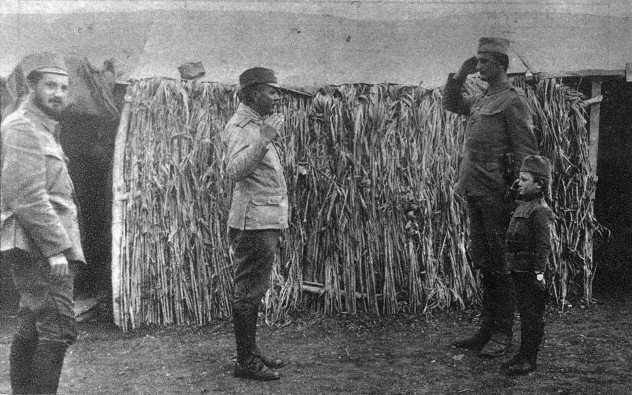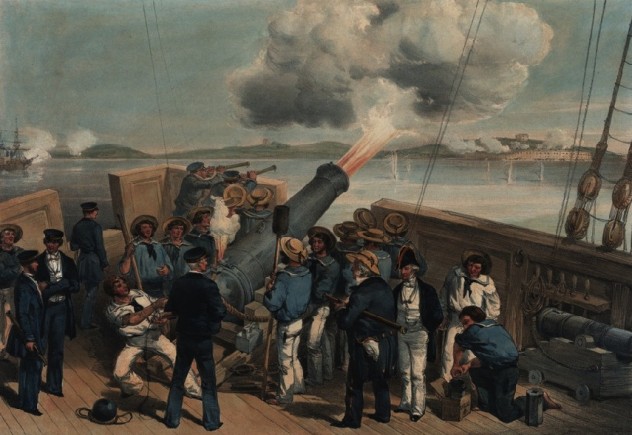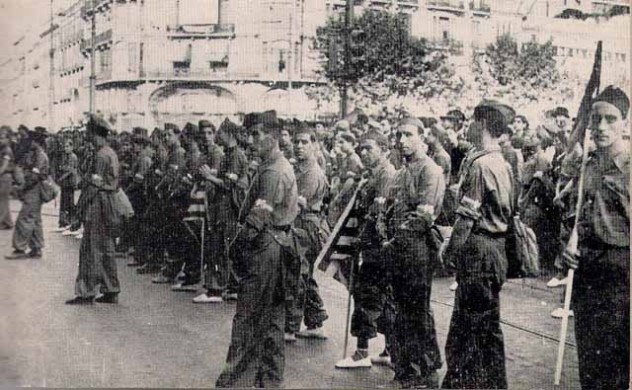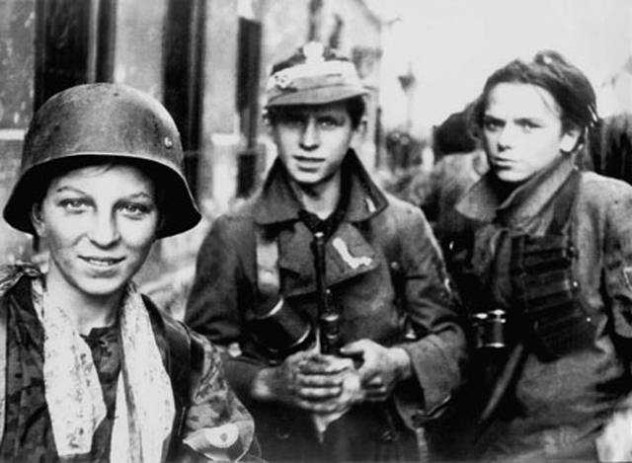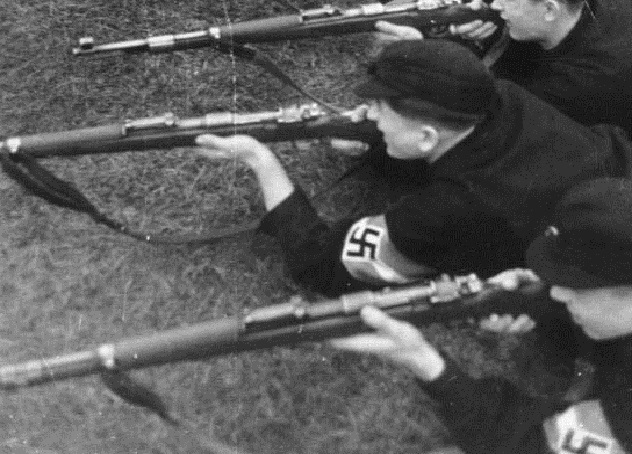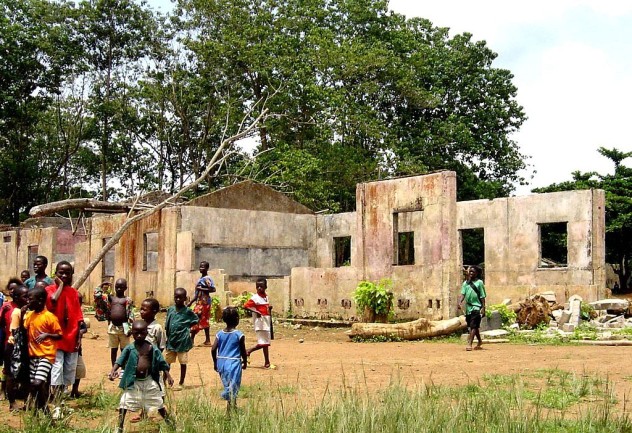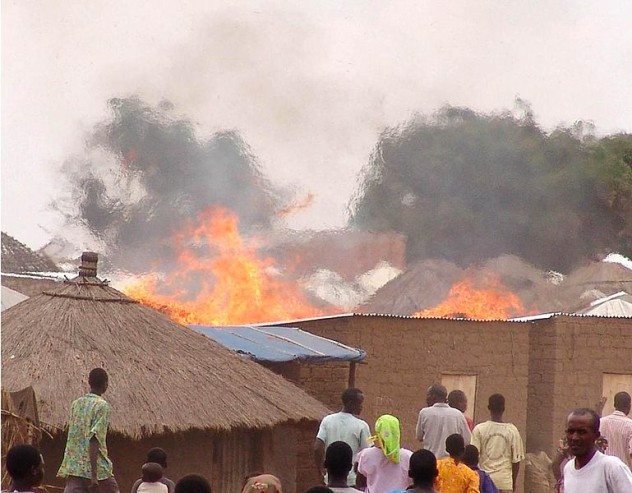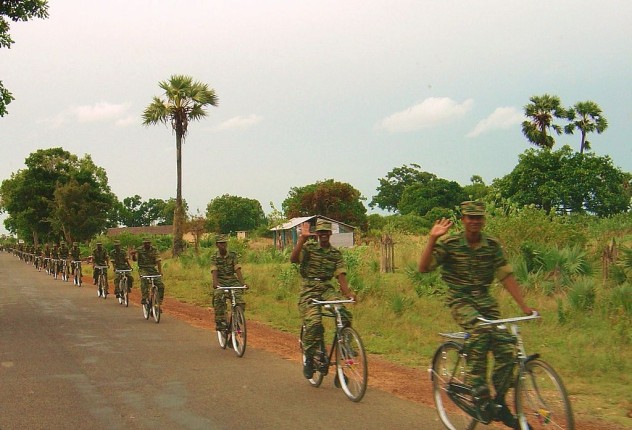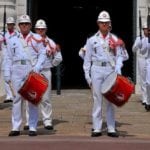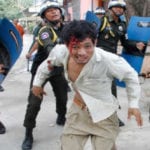10Momcilo GavricSerbian Army, World War I
Known as the “Serbian Knight,” Gavric enlisted in the Serbian Army at the age of eight after Austro-Hungarian forces slaughtered his entire family. Gavric was only spared due to a chance visit to his cousin’s home and, as the only surviving member of his family, he decided to join the army and fight against the force that had destroyed his loved ones. He left his home, which had burned down, and caught up with the 6th Artillery Division of the Serbian Army, telling them his story and how he wished for the lives of his family to be avenged. Upon learning the story of Gavric’s family and their demise, Major Stevan Tucovic granted Gavric admission to the army. Gavric remained with the Serbian ranks all the way through the end of World War I, fighting in the battle of Kolubara and surviving the Albanian Golgotha before sustaining wounds at Kajmakcalan on his way to becoming the youngest corporal in the world.
9The Jewish CantonistsTsarist Russia
The Jewish Cantonists were supposed to be drafted into military service if they had reached the minimum age of 12, but in order to meet quotas, particularly during the Crimean War, many conscripts were well under the minimum age requirement. During this period of forced conscription, the young recruits were sent to a military training academy and ultimately served in the military for a term of 25 years beginning when they reached the age of 18. One of the primary reasons for pressing the Jewish Cantonists into the military at such an early age related to Tsar Nicholas’s belief that Jewish children should be placed in the military while still young enough to be “susceptible to external influence.” Being so young, they often struggled to survive the demands of military life, despite not necessarily being on the front lines. Of a convoy of young conscripts, one author observed the following: “They brought the children and formed them into regular ranks: It was one of the most awful sights I have ever seen, those poor, poor children! Boys of twelve or thirteen might somehow have survived it, but little fellows of eight and ten. Not even a brush full of black paint could put such horror on canvas. Pale, exhausted, with frightened faces, they stood in thick, clumsy, soldiers’ overcoats, with stand-up collars, fixing helpless, pitiful eyes on the garrison soldiers who were roughly getting them into ranks. The white lips, the blue rings under their eyes, bore witness to fever or chill. And these sick children, without care or kindness, exposed to the icy wind that blows unobstructed from the Arctic Ocean were going to their graves.”
8Powder MonkeysNapoleonic Royal Navy
Powder monkeys, as they were called, played an incredibly important role on the warships used by the Napoleonic Royal Navy, as it was their job to ensure that there was a continuing supply of gunpowder being delivered to gun crews during the heat of battle. It was an incredibly dangerous job, and it was one that was often handled by children despite the high risk of serious injury and death. The gunpowder on the warships was stored in the magazine, which was a sealed storage chamber that was well below the waterline of the ship—a necessity given the nature of naval battle and the inherent dangers that vast quantities of gunpowder create. The responsibility of this important duty fell to the powder monkeys, who would have to provide a continual supply of the powder to the guns during battle, which, of course, led to serious carnage. New Histories noted that, “During action, as broadsides were fired into the ship’s hull, splinters of oak several inches thick would inflict obscene injuries. Gun carriages would be dismounted, crushing and maiming their crews. Guns could even misfire, sending a hail of scolding iron in all directions. The sights, smells and sounds of the injuries would have been absolutely appalling.”
7Monte PoceroSpanish Civil War
There were a number of atrocities committed on both sides of the Spanish Civil War, as hundreds of thousands died while Spain was forced to witness “the parading soldiers who flourished enemy ears and noses on their bayonets, the mass public executions carried out in bullrings or with band music and onlookers dancing in the victims’ blood.” Francisco Franco’s forces raped and murdered without hesitation, with one of Franco’s generals noting, “It is necessary to spread terror. We have to create the impression of mastery, eliminating without scruples or hesitation all those who do not think as we do.” In George Orwell’s account of the Spanish Civil War, Homage to Catalonia, he details many of the atrocities, including the use of child soldiers at Monte Pocero saying, “Here and there in the militia you came across children as young as 11 or 12, usually refugees from Fascist territory who had been enlisted as militiamen as the easiest way of providing for them. As a rule they were employed on light work in the rear, but sometimes they managed to worm their way to the front line, where they were a public menace. I remember one little brute throwing a hand-grenade into the dug-out fire ‘for a joke.’ ”
6The Grey RanksPoland, World War II
The Grey Ranks (also known as the Szare Szeregi) took part in the Warsaw Uprising toward the latter part of World War II, serving primarily to deliver important messages as a part of a sort of underground postal system from August–October 1944. The Grey Ranks were also partially responsible for the preparation of the uprising, as weapons were delivered over the wall and into the Warsaw Ghetto in advance of the uprising. Irena Polkowska-Rutenberg, just 14 at the time of the uprising, recalled taking part in delivering weapons and caring for the wounded, saying, “There was a little boy, about 14. He was brought wounded from the barricades with a hole in his head the size of a quarter. He kept on calling for his mother. They put him in my charge—this was such a shock for me.” The youngest members of the Grey Ranks were between 12–14 years old, and they were charged with not just the relaying of messages, but also with the smuggling of weaponry throughout the months that the Warsaw Uprising lasted. Older members of the Grey Ranks fought alongside the resistance fighters, and it is believed that an estimated 9,000 children perished during the fight against the Nazis occupying the city.
5Sons Of The RegimentSoviet Red Army, World War II
It was something of a long-standing tradition in the Soviet Red Army to “adopt” orphans into military service, and there have been some estimates indicating that the Soviets allowed 25,000 soldiers aged 6–16 to fight on the front lines of World War II. The duties of the “Sons of the Regiment” were not limited by the soldiers’ age, and there were many instances in which a child soldier would be seen carrying a submachine gun into battle. If they were not fighting in battle, they were used in any way possible to aid the unit to which they belonged, as some took on radio duties while others served as medics or nurses. One of the more memorable stories relating to the young Soviet soldiers involves a 13-year-old girl, Mariia I. Makarova, whose family was killed during World War II. She lied about both her age and gender in order to join a unit and ultimately fought under the leadership of Major General Ivan Paniflov in the 316th Rifle Division, earning a medal recognizing her bravery in defense of Moscow. When presenting the medal, Major General Paniflov asked Makarova, “Hey, lad, what’s your name?” to which she responded, “I’m not a lad, I’m a soldier.”
4Hitler YouthWorld War II
The Hitler Youth played a vital role in the Nazi Party’s rise to prominence in Germany, as many young German boys were indoctrinated with the beliefs and values of Nazism from a very early age. The spread of the Hitler Youth was swift, and 1935 saw about 60 percent of German youngsters belonging to the group. This would be quite important in the years leading up to World War II, as the Hitler Youth would be heavily relied upon all the way through the war’s end. The early years of the war saw many of the leaders of the Hitler Youth off to war, which led to many 16- and 17-year-olds taking control of the younger members of the organization. By the end of the war, German forces increasingly turned to the Hitler Youth for numbers and, by 1943, 10,000 recruits (many 16 years of age and younger) formed the 12th SS-Panzer Division Hitler Jugend. The following description is quite illustrative of the level of indoctrination and devotion among members: “The shocking fanaticism and reckless bravery of the Hitler Youth in battle astounded the British and Canadians who fought them. They sprang like wolves against tanks. If they were encircled or outnumbered, they fought until there were no survivors. Young boys, years away from their first shave, had to be shot dead by Allied soldiers, old enough, in some cases, to be their fathers.”
3Revolutionary United FrontSierra Leone Conflict
The civil war that plagued Sierra Leone for years resulted in countless atrocities, and the reports of the violent child soldiers fighting for the Revolutionary United Front (RUF) remain particularly chilling. Like many others who used child soldiers, the RUF took advantage of the recently orphaned children and forced them into combat under threat of extraordinarily harsh retribution. Ishmael Beah, one of the many child soldiers used by the RUF, recounted his experiences with the rebel group, saying, “Somebody being shot in front of you, or you yourself shooting somebody became just like drinking a glass of water. Children who refused to fight, kill, or showed any weakness were ruthlessly dealt with. Emotions weren’t allowed. For example, a nine-year-old boy cried because [he] missed [his] mother and [was] shot.” These children were forced to fight on the front lines, and the threat of death to them or members of their family was ever-present. Females were also routinely abducted by the RUF, and rape was a common occurrence. Speaking of the civil war in Sierra Leone, Peter Takirambudde, the executive director of the Africa Division of Human Rights Watch, said, “Children face some of the gravest abuses in this war at the hands of the RUF. The RUF specifically targets children for recruitment as child soldiers, forced labor, and sexual exploitation.”
2Lord’s Resistance ArmyNorthern Uganda
The Lord’s Resistance Army (LRA), led by Joseph Kony, has been terrorizing Northern Uganda and the surrounding area for nearly three decades. Initially formed in order to topple the Ugandan government, the LRA began taking young children into its ranks after Kony lost the little initial support he had. The methods employed by the LRA are appalling, as the group has been known to force their captives to rape or murder members of their own family, making them orphans and preventing them from ever returning home. The LRA routinely raids villages for supplies, “killing the weak and the old with machetes, swords or stones, and cutting off people’s ears, lips and noses to serve as a warning to others. The rebels capture those who can be useful to them, including children strong enough to carry weapons. The captives are tied together and marched to camps where they are violently indoctrinated and turned into soldiers, porters, cooks, or sex slaves.” One of the commanders of the LRA, Dominic Ongwen, is a former child recruit who remained with the LRA for years and is now facing war crimes charges from the International Criminal Court (ICC). Though he has cited his status as a former child soldier who was indoctrinated by Kony’s forces as reason for sympathy, he is also believed to be “responsible for the deaths of 100,000 people in Uganda and the displacement of 1.7 million.” Ongwen is one of the 30,000 children believed to have been abducted and forced into service by the LRA, and a researcher with Human Rights Watch acknowledged the inherent difficulties in the case saying, “Here is a child who suffered, who was himself abducted. And he will now have to answer for his crimes.”
1Tamil TigersSri Lankan Civil War
During the 25-year Sri Lankan Civil War, child abductions became commonplace, with abductees being forced to fight on the front lines for both sides in the war. Toward the end of the fighting, these abductions became more frequent, with UNICEF estimating that the forced recruitment of children numbered over 6,000 from 2003 to the end of the civil war. Once the child soldiers had joined the Tamil Tigers, the indoctrination was so strong that the young fighters were among the most feared, while others would go on to join the Black Tiger suicide bombers. The Sri Lankan soldiers called one of the Tamil Tigers’ units the “Baby Battalion,” and though it was composed mostly of young soldiers, it was also one of the more feared units of the Tamil Tigers. In order to help reintegrate the child soldiers who were spared by the end of the war, the Sri Lankan government organized rehabilitation camps, with the Major General in charge of the camp, Daya Ratnayake saying, “These are children who were exposed to danger, taken away from their families and deprived of their childhood. Our hope is to get them back to normal as much as possible.” J. Francis Wolfe is a freelance writer and a noted dreamer of dreams. When he’s not writing, he is most likely waiting for “just one more wave,” or quietly reading under a shady tree.
